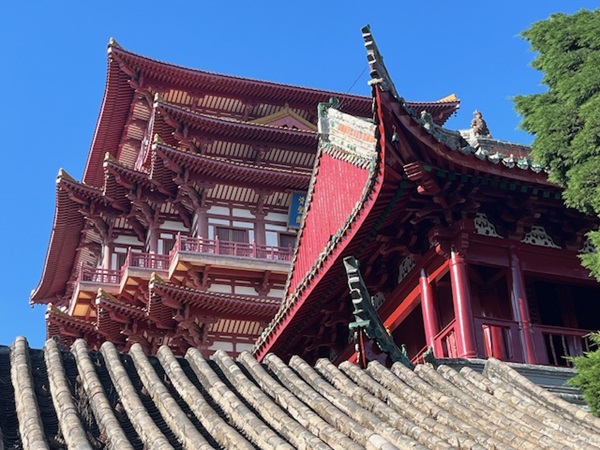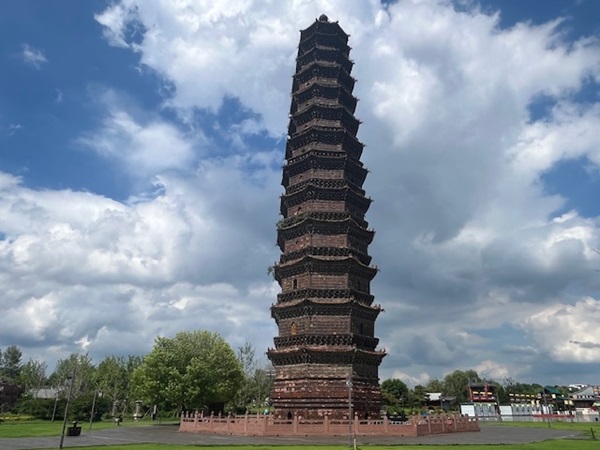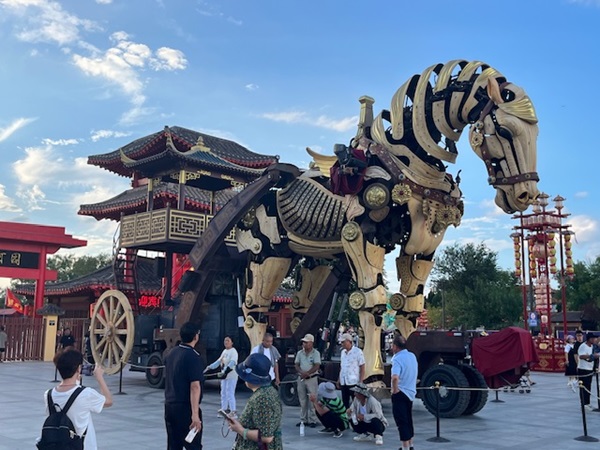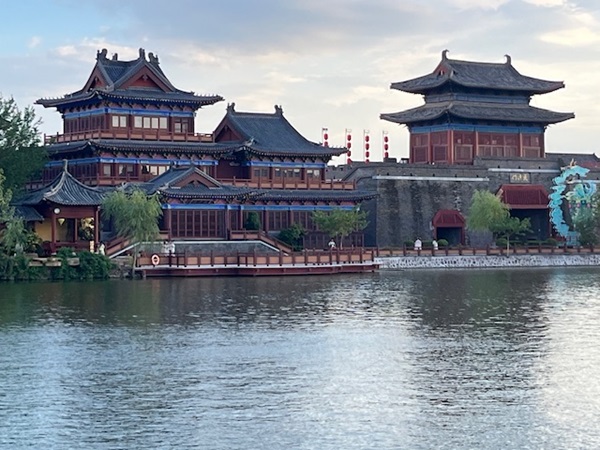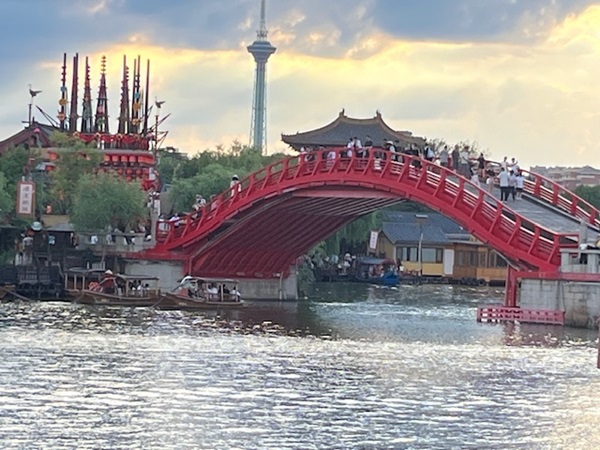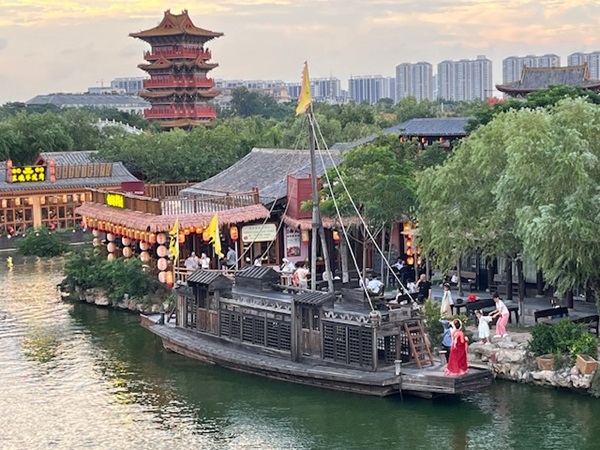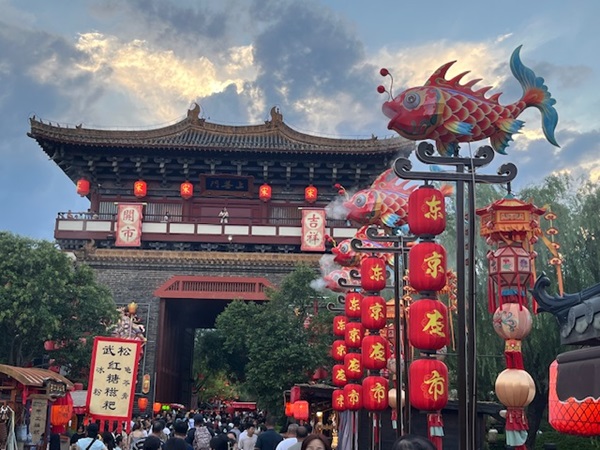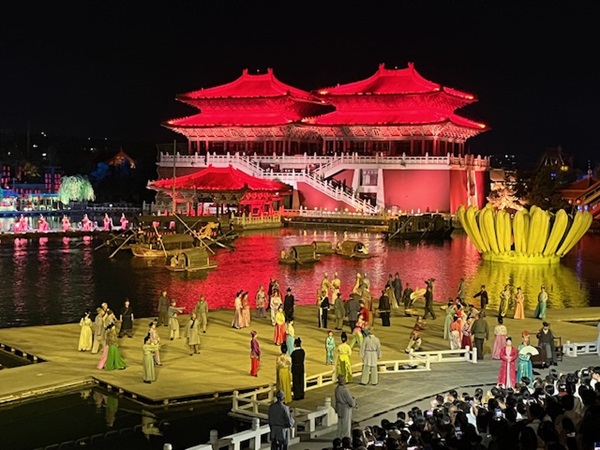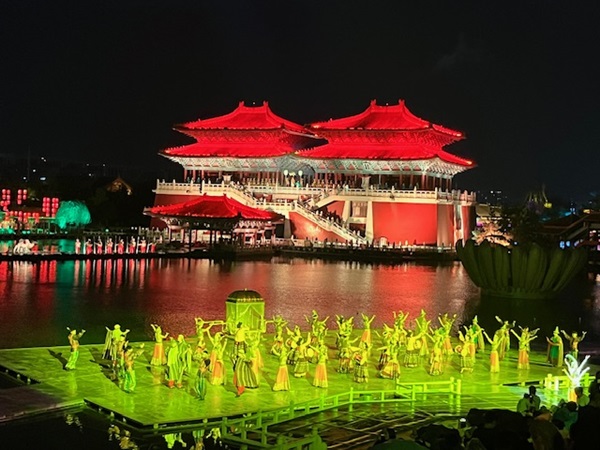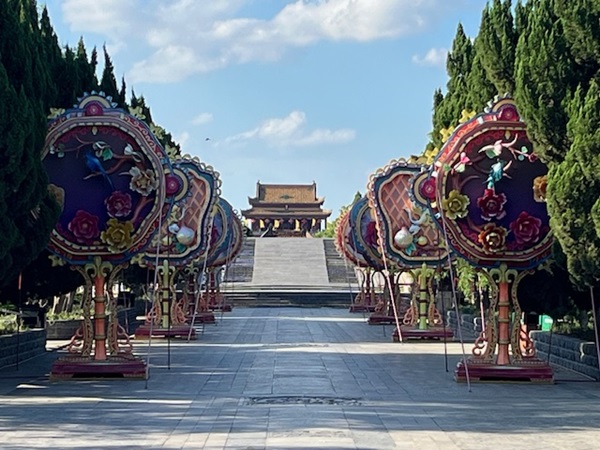 Dragon Pavilion;
Credit: Chronicle.lu
Dragon Pavilion;
Credit: Chronicle.lu
Continuing my series of articles on my recent visit to Henan proving in China, this one focuses on what we got up to Kaifeng.
The first stop was the impressive Iron Pagoda which was constructed in 555 AD. The emperor at the time renamed the temple as he used it when returning from a sacred mountain; in the 12th century, Kaifeng was the capital of the dynasty. The first pagoda was constructed around 1,000 AD from wood to keep the remains of a king from the Northern Song dynasty; however, it was destroyed by fire around 50 years later, with a replacement pagoda constructed in 1049 AD; it was made from glazed brick which resembles iron to the naked eye. It is 55m tall with thirteen stories and is octagonal in shape: according to legend, it was built on an octagonal pool where lotus flowers grew - there are also a series of underground caves. It has been impacted each time the nearby Yellow River flooded, as has the city which has been rebuilt many times. During WWII, Japanese soldiers fired holes into the tower, creating holes so that it could not be used as a water tower. In the 1950s, Chairman Mao visited the Iron Pagoda and provided budget for it to be repaired by craftsmen who ha to be sourced specifically. Due to North-Westerly prevailing winds, it now leans slights to the South-East, but not as much at the Leaning Tower of Pisa.
The Daxianggou Temple dates back to 555 AD, with many buildings on the current site being constructed during the Qing dynasty (circa 200 years ago); it was open to monks until 1992. Unlike most temples which have either three or five doors, this one has seven doors, highlighting its importance to visitors. It also has statues of eighteen arhats (qualified monks; the first of three levels to become Buddha). On the reverse side, there is an ornate "mountain" constructed of naturally-fragrant wood (not unlike cedar) with 54 figures of Buddha, etc. The next building within the temple grounds has a hall with 500 arhats who surround a four-sided Buddha with 1,048 hands and 1,048 eyes.
The Dragon Pavilion was used as a palace by a prince in the Ming Dynasty. While it appears to be surrounded by a lake and reached across a causeway, the causeway in fact separates two distinct lakes. It is built on the remains of a former royal palace which had been used by no less than nine emperors of the Northern Song dynasty. The last building in this complex dates from the Qing dynasty - it was constructed in 1734 AD. It was decorated with many dragons and was used by people to pay their respects to the emperor (who called themselves the son of the dragon).
In the evening, we visited the Millenium Park, a hub of activity which could be compared to Tivoli in Copenhagen. While there are some fairground rides, it is primarily full of restaurants (both eat-in and street food / food court style), cafés and shops, with many street entertainers in action, as well as small parades, with hawkers offering rides by sedan chair or rickshaw. There is a central lake with boat rides and many people dressing up in traditional costume, as well as a large symbolic bridge. But the centrepiece is an open-air theatre with a massive capacity of 2-3,000 people, partly covered (yes, it did rain during part of the show, but effective ponchos were provided - luckily our seats were covered). The hour-long spectacle took place on a stage as well as by boat across the lake, as well as a temple and palace; it told the stories of a number of traditional poems from Chinese culture, often including emperors, princes and princesses, as well as battles and love - both forlorn and in marriage.
For the main / introductory article on my trip to Henan, please click here.



